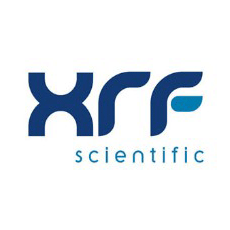Ascertaining volumes of aluminum oxide (Al2O3), or alumina, in silicates and clays is often a laborious task. The traditional approach to this task involves gravimetric analysis, but these techniques are both complex and time-consuming.
Samples should initially be decomposed using an appropriate precipitant prior to the aluminum being separated from interfering elements such as titanium (Ti) or iron (Fe). The precipitate will be fired to promote oxidation before being weighed. Results of this process may be expressed as a percentile of total sample weight of alumina after ignition.
Why Use X-Ray Flux Chemicals for Alumina Fusion?
There are numerous organic reagents suitable for quantitative precipitation of aluminum, meaning that selecting the right option for a particular application can be overwhelming. The gravimetric workflow itself is also a long, inefficient process.

Image Credit: XRF Scientific
One innovative approach to alumina quantitation in siliceous materials (for example, bauxite ore) lies in fusion using X-ray flux chemicals; for example, lithium borate salts like metaborate or lithium tetraborate.
By preparing siliceous samples as homogenous discs or glass beads, geochemists are able to rapidly ascertain the elemental fingerprint of rocks and clays down to the sub-parts per million (ppm) range.
The use of spectral analysis in assessing alumina content offers a much more precise option than gravimetry while simultaneously enabling streamlined workflows with greater degrees of repeatability.
The right X-ray flux chemicals must be selected for the sample, however. While lithium fusion provides a robust, general purpose means of decomposing geological sample matrices, high temperature chemical interactions can cause significant damage to samples and contribute to labware degradation. Selecting the right flux is key to helping mitigate these problems and reduce these risks.
Which Lithium Tetraborate Fluxes are Suitable for Alumina?
Lithium tetraborate (Li2B4O7) remains the most commonly utilized flux chemical for both X-ray fluorescence (XRF) and inductively-coupled plasma mass spectroscopy (ICP-MS).
Lithium tetraborate is transparent to light element X-rays, so it will not interfere with important spectral analyses. It does have a relatively high melting point (930°C), however, meaning it may struggle to fuse with some ores like bauxite.
It is often advisable to use a mixture of lithium tetraborate flux with lithium metaborate (LiBO2) because this offers better solubility and a lower melting point (849°C).
In order to ensure an ideal general purpose flux with exceptional fusion compatibility for neutral samples, XRF Scientific recommends employing a mixture of lithium tetraborate and metaborate at ratios of 50:50.
The company’s 50:50 lithium tetraborate/lithium metaborate mixture is ideal for alumina fusion, promoting rapid matrix decomposition and minimal loss on ignition (LOI).

This information has been sourced, reviewed and adapted from materials provided by XRF Scientific.
For more information on this source, please visit XRF Scientific.